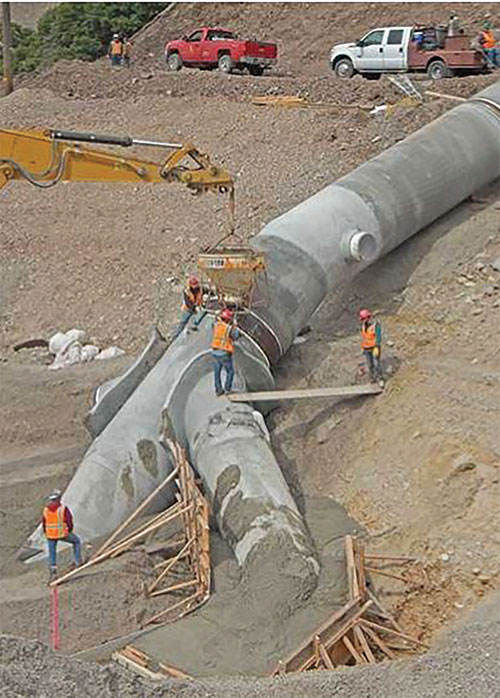Engineering News Record has named the Olmsted Hydroelectric Power Plant Replacement at the mouth of Provo Canyon as the Intermountain Project of the Year as part of its annual awards program that honors the best construction projects in the United States. The Olmsted project also was recognized as the Best Energy/Industrial Project in the Intermountain Region and received the Excellence in Safety Award.{mprestriction ids="1,3"}
The two-year project included construction of a new powerhouse and a new transmission line that required installing 850 feet of 84-inch steel pipeline into a 12-foot rock tunnel. Much of this work was done during the winter on steep slopes and required crews to use two excavators to move and install 20-foot sections of penstock, each weighing 22,000 pounds. In total, the project logged more than 250,000 work-hours without a reportable accident — a remarkable achievement considering the high-risk construction site.
Olmsted is a partnership with the U.S. Bureau of Reclamation, U.S. Department of the Interior and Central Utah Water Conservancy District. The $42 million facility was designed by Jacobs Engineering Group and Ames Construction of West Valley City was the general contractor.
“We were able to install a very efficient, high-quality, modern plant and deliver a project that continues the legacy of historic generation of power,” said K.C. Shaw, chief engineer at Central Utah Water, which operates the federal facility.
The Olmsted Power Palnr is one of the oldest hydropower generation plants in the western United States. In 1904, Olmsted became the first high-voltage, long-distance, alternating-current power transmission system in the world. After an evaluation showed the facility was nearing the end of its life, the plant shut down in 2015. Plans for a new facility began in order to maintain water rights and store water in Jordanelle Reservoir.
Olmsted is part of the Central Utah Project (CUP), which captures a large portion of Utah’s share of Colorado River water from the Uinta Basin and moves it through several reservoirs to eight counties along the Wasatch Front and Central Utah. The CUP system delivers more than 350,000 acre-feet of water each year.{/mprestriction}








